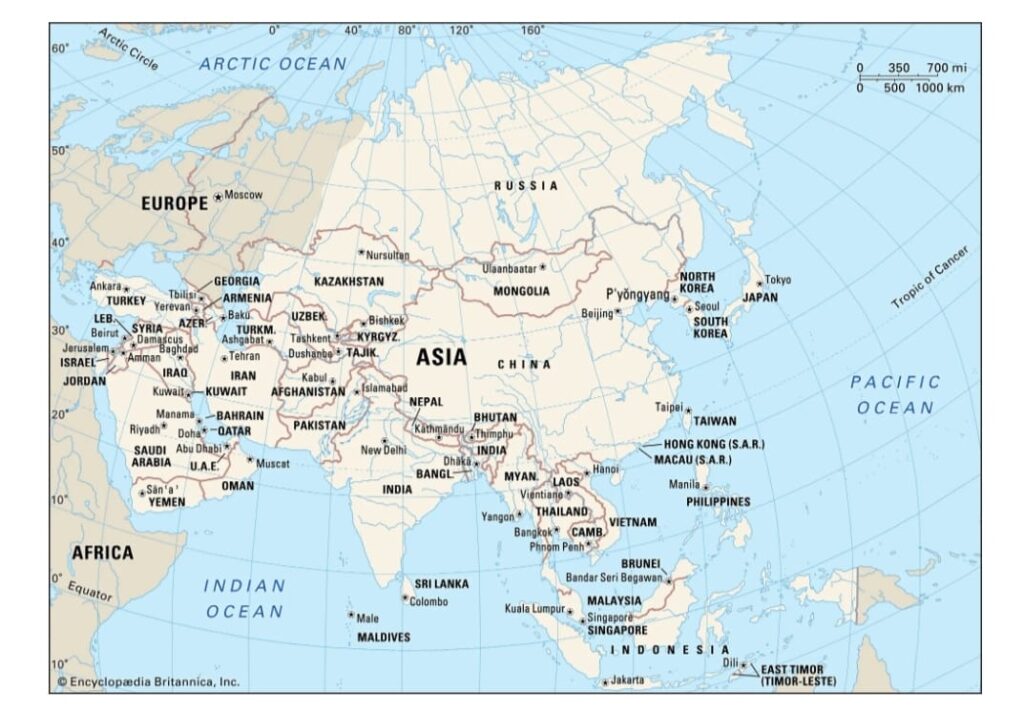INTRO -:
Financial crises have repeatedly shaped economies, altered political landscapes, and transformed societies throughout history. These economic disasters often follow similar patterns of excessive optimism, speculative bubbles, and eventual collapse, yet each has its unique characteristics and lasting impacts.
The Credit Crisis of 1772

One of the earliest documented financial crises began in London and rapidly spread across Europe and the American colonies.
Causes:
Excessive wealth accumulation in the British Empire through colonial trade
Period of rapid credit expansion by British banks
Overoptimism in the banking sector
Trigger Event: On June 8, 1772, Alexander Fordyce, a partner of the British banking house Neal, James, Fordyce, and Down, fled to France to escape debt repayments. This news triggered immediate bank runs as creditors formed long lines at British banks demanding cash withdrawals.
Impact and Significance:
Rapid spread to Scotland, Netherlands, and British American colonies
Historians believe this crisis contributed significantly to the Boston Tea Party protests
Considered a contributing factor to the American Revolution
The economic disruption from this crisis helped create the conditions for political revolution, showing how financial instability can have profound historical consequences. Source
The Great Depression (1929- 1939)

The Great Depression was the worst economic disaster of the 20th century and remains the benchmark against which all other financial crises are measured.
Causes:
Stock market speculation during the “Roaring Twenties”
Excessive use of margin trading (buying stocks with borrowed money)
Weak banking regulations and structure
Contractionary monetary policy
Agricultural overproduction and falling prices
Trigger Event: The Wall Street Crash of 1929, starting with “Black Thursday” (October 24) and continuing through “Black Tuesday” (October 29), when the market lost over 25% in just two days.
Impact and Severity:
U.S. GDP fell by approximately 30% between 1929 and 1933
U.S. unemployment reached nearly 25% at its peak in 1933
Thousands of banks failed across the country
Global trade declined by roughly 65%
Deflation caused prices to plummet, increasing the real value of debts
Agricultural prices collapsed, devastating rural communities
Global spread affected economies worldwide for a decade
Legacy and Reforms:
Creation of the Securities and Exchange Commission (SEC)
Establishment of the FDIC to insure bank deposits
Glass-Steagall Act separating commercial and investment banking
Introduction of Social Security and unemployment insurance
Expanded role of government in economic management through New Deal programs
The Depression fundamentally altered the relationship between government and the economy in most developed nations and laid the groundwork for modern economic policies and institutions. Source
The OPEC Oil Price Shock of 1973
This crisis marked the first major global economic disruption driven by energy politics and resource control.
Causes:
Political tension between OPEC nations and Western powers
U.S. support for Israel during the Fourth Arab-Israeli War (Yom Kippur War)
Growing dependency of developed economies on oil imports
Trigger Event: OPEC member countries (primarily Arab nations) declared an oil embargo against the United States and its allies, abruptly halting oil exports.
Impact:
Severe oil shortages in the U.S. and allied countries
Oil prices quadrupled from approximately $3 to $12 per barrel
Created the unique economic phenomenon of “stagflation” (simultaneous high inflation and economic stagnation)
U.S. GDP declined by 3.2% during the ensuing recession
Inflation reached double digits in many developed countries
Unemployment increased substantially across affected economies
Exposed the vulnerability of industrialized nations to energy supply disruptions
Legacy:
Spurred development of energy conservation policies
Increased interest in alternative energy sources
Led to creation of strategic petroleum reserves in many countries
Fundamentally changed thinking about energy security
Highlighted the political dimension of economic interdependence
This crisis demonstrated how resource dependencies could be weaponized, forever changing the relationship between energy, economics, and geopolitics. Source
The Asian Financial Crisis of 1997

This crisis began in Thailand and rapidly engulfed East Asian economies that had previously been celebrated as “Asian Tigers” for their rapid growth and development.
Causes:
Excessive speculative capital flows from developed countries to East Asian economies
Overextension of credit and accumulation of excessive debt
Fixed exchange rates that became unsustainable
Inadequate financial sector regulation
Current account deficits and foreign-denominated debt
Trigger Event: In July 1997, the Thai government abandoned its fixed exchange rate against the U.S. dollar due to lack of foreign currency reserves, causing the Thai baht to collapse
Spread and Impact:
Quickly spread to Indonesia, Malaysia, Philippines, South Korea, and Hong Kong
Widespread reversal of billions of dollars in foreign investment
Currency collapses across the region (Indonesian rupiah lost 80% of its value)
Deep economic contractions (Thailand’s economy shrank by 10.5%)
Social and political instability (including the fall of Indonesia’s Suharto regime)
Dramatic increase in poverty and unemployment
Required massive IMF bailout packages totaling over $40 billion
Recovery and Lessons:
Exposed the risks of rapid financial liberalization without adequate oversight
Led to widespread reforms in banking regulations across Asia
Prompted Asian countries to build massive foreign exchange reserves as protection
Many affected countries eventually emerged stronger with more resilient financial systems
Created lasting skepticism toward IMF policies in the region
This crisis demonstrated how quickly investor sentiment could shift and revealed the vulnerabilities created by global capital flows in emerging markets. Source
The Dot-Com Bubble (1995-2001)
The dot-com bubble represented the first major financial crisis centered around the internet economy and new technology.
Causes:
Excessive speculation in internet-related companies
Massive venture capital investments in startups with no clear path to profitability
Widespread belief that traditional business metrics didn’t apply to internet companies
Low interest rates encouraging risky investments
Market psychology of “fear of missing out” on the next big tech success
Bubble Growth:
The NASDAQ Composite index rose from around 1,000 in 1995 to over 5,000 by March 2000
Many internet companies reached multi-billion dollar valuations with minimal revenue
IPOs of tech companies commonly saw first-day price increases of over 100%
Investment in internet infrastructure expanded dramatically
Burst and Impact:
The bubble peaked on March 10, 2000, when the NASDAQ reached 5,048.62
By October 2002, the NASDAQ had fallen to 1,114, a 78% drop from its peak
Approximately $5 trillion in market value was erased
Thousands of dot-com companies failed
Significant job losses in the technology sector
Venture capital investment contracted dramatically
Led to a mild recession in 2001
Notable Failures:
Pets.com (spent millions on advertising but collapsed just 9 months after its IPO)
Webvan (online grocer that burned through $800 million before failing)
Boo.com (fashion retailer that spent $188 million in just 6 months)
eToys.com (reached $10 billion market cap but went bankrupt when sales disappointed)
Survivors: Companies that survived the crash, like Amazon, eBay, and Google, became the foundation of the modern internet economy. They generally had stronger business fundamentals, manageable cash burn rates, or were able to adapt quickly. Source
The Financial Crisis of 2007-2008 & Great Recession
This crisis represents the most severe global financial disaster since the Great Depression, with far-reaching consequences that continue to shape economic policies today.
The Financial Crisis of 2007-2008 & Great Recession
This crisis represents the most severe global financial disaster since the Great Depression, with far-reaching consequences that continue to shape economic policies today.
Causes:
Subprime mortgage lending to borrowers with poor credit history
Complex financial innovations (mortgage-backed securities, CDOs)
Excessive risk-taking by financial institutions
Inadequate regulatory oversight
Credit rating agencies failing to accurately assess risk
Global imbalances in capital flows
Record levels of household debt
Key Events:
Housing bubble burst (2006-2007)
BNP Paribas froze three investment funds (August 2007)
Bear Stearns collapse and JP Morgan acquisition (March 2008)
Lehman Brothers bankruptcy (September 15, 2008)
AIG bailout ($182 billion)
Global credit freeze and stock market crash
Government bailouts of major financial institutions worldwide
Impact:
U.S. GDP contracted by 4.3% from peak to trough
U.S. unemployment reached 10%
Housing prices declined by over 30% nationally
Approximately 8.7 million jobs lost in the U.S.
$19.2 trillion in household wealth destroyed
Foreclosures affected over 6 million American households
Global trade collapsed by over 15%
Triggered European sovereign debt crisis
Policy Responses:
Unprecedented central bank interventions (quantitative easing)
Government stimulus packages (American Recovery and Reinvestment Act)
Troubled Asset Relief Program (TARP)
Dodd-Frank Wall Street Reform and Consumer Protection Act
Creation of the Financial Stability Board
Basel III capital requirements for banks
Macroprudential regulation to address systemic risk
The 2008 crisis fundamentally changed attitudes toward financial regulation, central banking, and government intervention in markets. Its effects on politics, inequality, and public trust in institutions continue to resonate. Source
The COVID-19 Pandemic Economic Crisis (2020-2021)
The COVID-19 crisis represented a unique economic shock triggered by a global health emergency rather than financial imbalances.
Causes:
Global pandemic requiring widespread lockdowns and business closures
Supply chain disruptions on an unprecedented scale
Collapse in consumer demand for services requiring in-person interaction
Extreme uncertainty about economic outlook
Unique Characteristics:
Government-mandated economic shutdowns to protect public health
Simultaneous supply and demand shocks
Extremely rapid onset (weeks rather than months)
Disproportionate impact by sector (services vs. goods)
Unprecedented policy response in speed and scale
Impact:
Global GDP contracted by 3.3% in 2020
U.S. unemployment rate spiked to 14.8% in April 2020
22 million U.S. jobs lost in just two months
Service industries (hospitality, travel, entertainment) devastated
Dramatic acceleration of digital transformation and remote work
Supply chain disruptions led to shortages and price increases
U.S. poverty increased for first time in a generation
Disproportionate impact on women, minorities, and low-wage workers
Policy Response:
Over $10 trillion in global fiscal support
Central banks cut interest rates to zero or negative levels
Massive expansion of quantitative easing programs
Direct payments to households (Economic Impact Payments in U.S.)
Enhanced unemployment benefits
Paycheck Protection Program for businesses
Eviction moratoriums and forbearance programs
Recovery and Legacy:
Fastest recession and recovery in modern history
Created inflation pressures due to supply constraints and stimulus
Accelerated adoption of digital technologies by several years
Transformed workplace norms and remote work expectations
Exposed vulnerabilities in global supply chains
Increased government debt to record levels
Highlighted economic inequalities and vulnerabilities
The COVID-19 crisis demonstrated both the fragility of the global economic system and its remarkable adaptability. It also showed the importance of decisive government action in crisis management. Source
Common Patterns in Financial Crises
Despite their different triggers and contexts, financial crises often follow similar patterns:
Asset Bubbles – Prices of certain assets (stocks, housing, commodities) rise far above their fundamental values
Excessive Leverage – Debt levels increase dramatically, amplifying potential losses
Irrational Exuberance – Market psychology becomes detached from economic fundamentals
Regulatory Failure – Oversight mechanisms fail to identify or address growing risks
Contagion – Problems in one market or region spread rapidly to others
Liquidity Crises – Access to short-term funding suddenly disappears
Deleveraging – Rapid sell-offs and debt reduction exacerbate market declines
Policy Responses – Government and central bank interventions to stabilize markets
Structural Reforms – Changes to regulations and institutions following the crisis
Economic Scarring – Long-term effects on growth, employment, and public confidence
Conclusion
Financial crises are recurring features of economic history, each with unique causes and characteristics but sharing common patterns. Understanding these historical events provides valuable context for interpreting current economic challenges and developing more resilient financial systems.
From the Credit Crisis of 1772 that contributed to the American Revolution to the COVID-19 pandemic that transformed how we work, financial crises have profound and lasting impacts that extend far beyond economics into politics, society, and daily life. While their immediate effects are often devastating, they also frequently lead to important reforms that strengthen financial systems against future shocks.